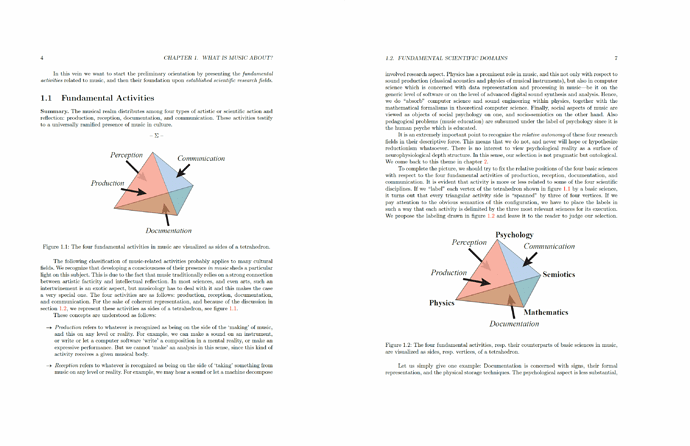Finally had time to look at Ian Ring’s ‘A Study of Scales.’
The Major Scale in different mathematical notations:
Decimal 2741
Binary 101010110101
Intervals [2,2,1,2,2,2,1]
Pitch Class Set {0,2,4,5,7,9,11}
The modal relationships between scales define the Grabdeha Groups in the Carnatic Melakarta system.
The 2048 scales are simply 2^11. Elliot’s ‘Group Actions…’ starts with the eleventh row of Pascal’s triangle, and goes on to enumerate the complete permutations of 12 tones, musical or not. Elliot focuses on the Hindustani system of 32 scales, although he also describes the Carnatic system of 72 scales.
Forte vs Rahn. Both systems are technically mathematically correct, but they are unwieldy, unintuitive, and calculating with them is like doing logarithms with Roman Numerals. No musician is ever going to start a scale on zero–ONE has been beaten into us from childhood. ONE, two. ONE, two, three. ONE, two, THREE, four. ONE, two, three, FOUR, five. &c. But I say nothing about rhythm, only scales.
I prefer to use the Intervals, any of the other systems can be derived from them. Also, the Roman Numeral system can be expanded by adding altered tones, as for instance, Vb6 or ii#7, which can be named Melodic Myxolydian and Harmonic Dorian, respectively. This is purely descriptive, not calculable, well maybe.
My intention is merely to introduce the Melakarta system to Western musicians of all levels of skills, from the self taught to the Juliard graduates.
The question remains: which math is most useful for musical software? Probably the Binary. I will, however, try adding scales in Binary. I’ve been working on a group addition (or rather averaging) of scales using Intervals.
But I have convinced myself that the Intervals are more easily understood by humans. It takes a ‘Rain Man’ to think in Binary; Decimal and Pitch Class are also too far abstracted from the actual physical scales.
